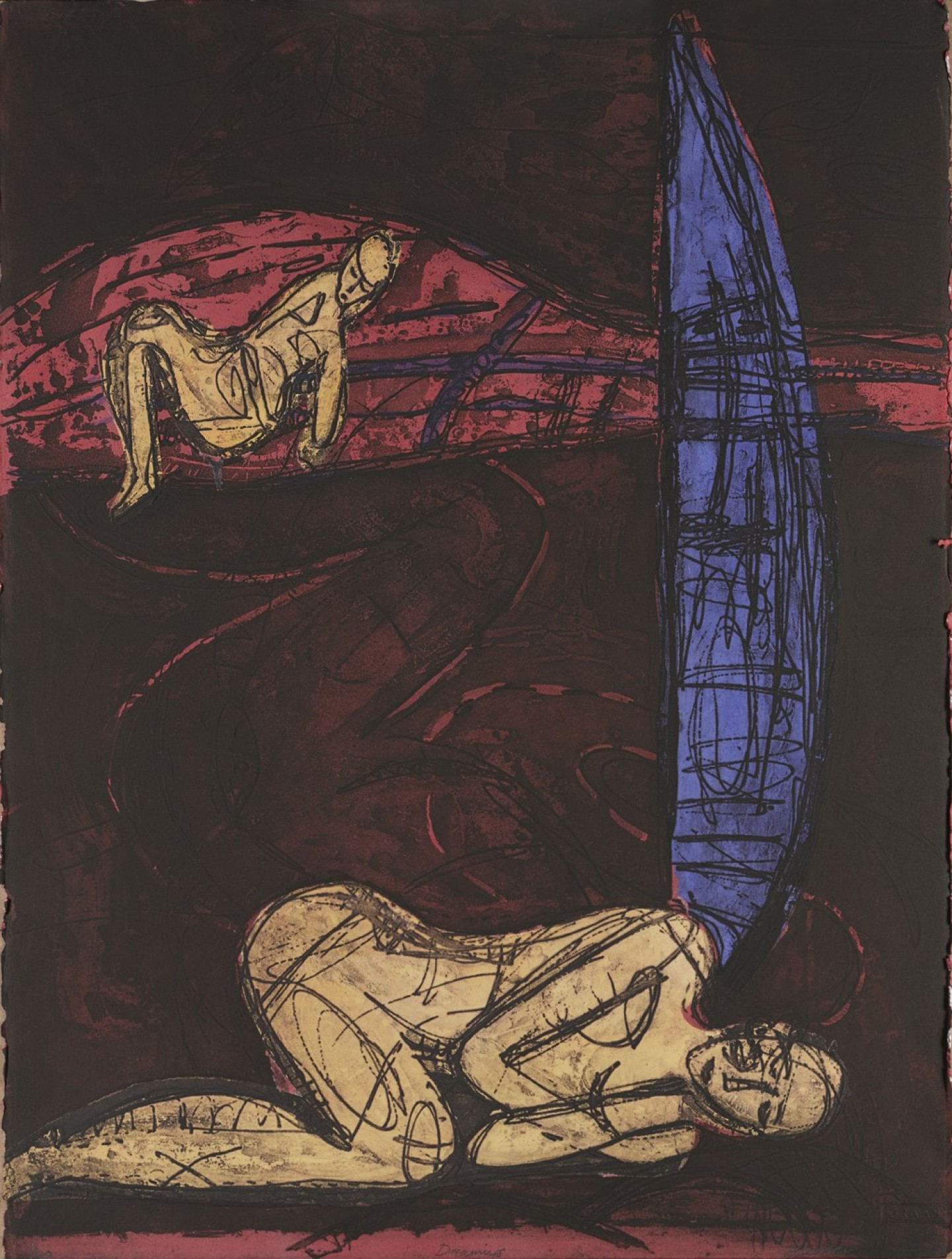DESCRIPTION
Linking Lucie is painted in an uncompromisingly modern manner, using mixed media and a free, expressive style shaped by Hunter’s study under one of the most original late twentieth-century artists, the German Georg Baselitz (b. 1938). However, it actually addresses important issues relating to prehistory. ‘Lucy’ (spelt ‘Lucie’ by Hunter) was the name given by scientists to the fossilised remains of a woman found in Ethiopia in 1974 and discussed at a major international conference in Paris in the year of this painting. A mature but diminutive adult, ‘Lucy’ lived over three million years ago; much of her skeleton was ape-like in build but she had a pelvis, legs and feet suggesting she was capable of walking upright like a human. Hunter’s powerful, circling lines are a celebration of Lucie’s strength, emphasising both her femininity and her role in the evolutionary chain.
DETAILS
-
Artist
Margaret Hunter
-
Date
1989
-
Medium
Acrylic and pastel on paper
-
Object number
472
-
Dimensions unframed
156 × 99 cm
-
Dimensions framed
162 × 104.5 × 4 cm
-
Marks
Signed and dated bottom right
-
Copyright
Ⓒ The Artist
ARTIST PROFILE
Margaret Hunter, b. 1948
Hunter trained at the Glasgow School of Art in her early thirties, to graduate in 1985, fulfilling a long-held ambition. Her drive led her to study in Berlin, under the guidance of George Baselitz (b. 1938) at the Hochschule der Kunste. The political state of her new adoptive city became tied to the development of her work, as she was first very aware of the the conflict between her home in West Berlin, and the surrounding eastern German state, and then the complex emotions following the fall of the Berlin Wall. Hunter was later invited to create an artwork for the Wall itself, which became pivotal to her career, on the 1.3km stretch that was preserved as the East Side Gallery. Thus Hunter became well established in both Britain and Germany, with her work entering numerous national collections in both countries. Her work embraces the human condition, often expressed through a lone female figure, a vehicle to explore the personal, political, cultural and social.






